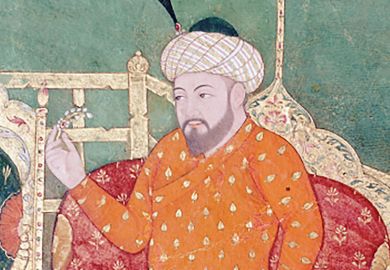Are Racists Crazy? How Prejudice, Racism, and Antisemitism Became Markers of Insanity
Sander L. Gilman and James M. Thomas
New York University Press
Rather a timely question. Beyond the blunt title, this is a detailed study of shifting discourses that takes in fascism and eugenics, Freud, the epistemic culture of racism, the First World War, the American Psychiatric Association’s shifting views, and the hope that drugs – such as the beta blockers used in recent University of Oxford tests – might reduce implicit racial bias. The authors end their consideration of the pernicious outcomes of “the tangled bank of the psychological and sociological ‘sciences’ of race and their ongoing positions within the world biopower” with the assertion that we need to raise such “spectres” if we are to achieve liberation.
Mouthfeel: How Texture Makes Taste
Ole G. Mouritsen and Klavs Styrbaek
Columbia University Press
A biophysicist and a chef chew over the mysteries of what’s going on in our mouths (and noses) when we encounter salep dondurma, oysters, margarine and katsuobushi, the world’s hardest food. Along the way: is kokumi (thickness/continuity/mouthfulness) an independent taste? Why do fatty foods seem warmer? What is a soft-boiled egg? And, proving the duo can wok it like they talk it, they share 50 recipes ranging from grilled beef heart to jellyfish popsicles.
Cuba and Revolutionary Latin America: An Oral History
Dirk Kruijt
Zed Books
Globetrotting, matter-of-fact, meticulous and, underneath the pragmatism, a bit of a romantic: who better than a Dutch scholar to tease memories from 70 veterans of the Cuban revolution, and the generation that followed, of pre-1959 racism and poverty, Che and Fidel, the Sierra Maestra and the second Frente, the CIA and the USSR, and Cuba’s support, ideological and practical, for leftist movements across Latin America. Vivid first-person accounts, many from octogenarians, bristle with honesty. “There’s no such thing as bravery or cowardice,” recalls one man of his torture by Batista’s forces. “There is only fear. And a medical compañero who was in prison told me, if you have no fear then you have no value. Because only the fools…have no fear.” A guardedly upbeat end offers an emphatic restatement of Cuba’s “extraordinary” legacy to the region.
Higher Education and the Common Good
Simon Marginson
Melbourne University Publishing
It’s no digression when the author muses on the slogans “Give us back our country!” and “Make America great again!”: the negative positioning of higher education goes hand in glove with “a visceral and nostalgic patriotic identity”. This data-informed study, widely referencing key scholarship as it covers the historical sociology of higher education, its political economy, and its positional competition and the common good, and informed by Marginson’s native Australia, “is one response to that negative positioning…and a celebration of the potentials offered by the multiple engagement of higher education in society, within a cosmopolitan social democratic framework”.
What Journalism Could Be
Barbie Zelizer
Polity
Reimagine the news, urges a senior academic and former reporter, in introducing a collection written before the rise of “fake news” as a term, if not a practice. Sober and scholarly, and referencing the global refugee crisis, digital media and Islamic State, it offers reflections on the aims and practices of journalism (and journalism studies) for both lecturers and students, with the chapters “Twelve Metaphors for Journalism”, “How the Shelf Life of Democracy Hampers Coverage” and “Thinking Temporally about Journalism’s Future” of particular interest.
Register to continue
Why register?
- Registration is free and only takes a moment
- Once registered, you can read 3 articles a month
- Sign up for our newsletter
Subscribe
Or subscribe for unlimited access to:
- Unlimited access to news, views, insights & reviews
- Digital editions
- Digital access to THE’s university and college rankings analysis
Already registered or a current subscriber?



